Coaxial connectors are electrical connectors used to connect coaxial cables, which are cables designed to transmit high-frequency signals. These connectors are commonly used in various applications, including telecommunications, cable television, and radio frequency transmission. There are many different types of coaxial connectors available on the market, each with unique features and benefits. In this article, we will discuss the 15 best coaxial connector types.
Best Coaxial Connector Types
A coaxial cable connector is a component that connects the end of a cable. It helps to insert the cable into the port or interface of an electronic system. There are many types of coaxial cable connectors. Here are some common types of coaxial cable connectors:
BNC
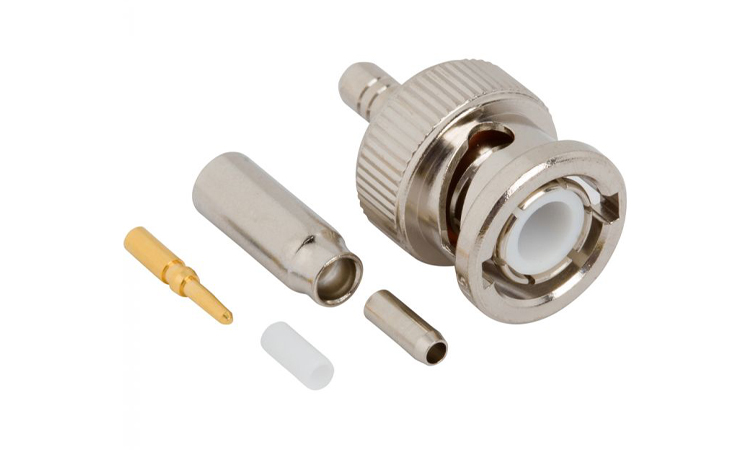
The full name of the BNC is Bayonet Neill-Concelman. This connector is suitable for many types of coaxial cables. The BNC connector is also RF coaxial connector types that people can use instead of a coaxial connector. Most companies use them for quick connection and disconnection in RF equipment. They are available in 50 and 75-ohm versions. Nowadays, it is mostly used in radio and security cameras. They are suitable for various low-frequency environments below 4GHz. BNC connectors are not suitable for use in environments close to 10GHz. Because in that environment, they can easily lose mechanical stability.
TNC
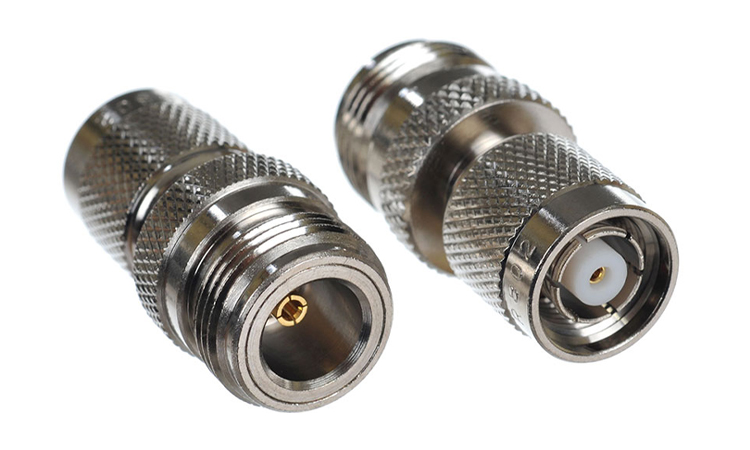
TNC is a popular RF coaxial connector types. The microwave frequency performance of TNC is excellent. It is an upgraded version of the BNC and has a reverse polarity version. The connector is threaded to secure itself. The use of these threads allows the TNC to minimize equipment leakage. The TNC also supports the ability to operate in frequencies up to 12GHz. TNC is weatherproof and rainproof. It is especially suitable for some outdoor applications. Applications such as RF/antenna connectivity and cellular towers.
F-Type
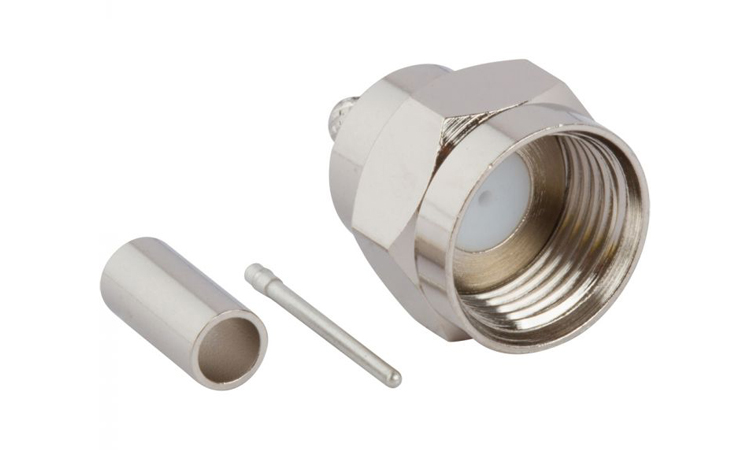
F-type connectors are often used on the back of televisions. These connectors can be used for various cables, such as RG59, RG6, and RG11.
They are a common connector type used for antennas, cables, and satellite TV.
N-Series
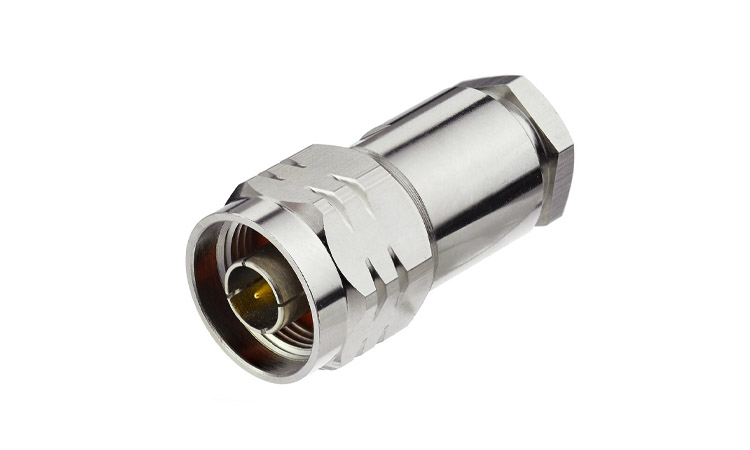
The N-series connector takes its name from inventor Paul Neill. N-Series connectors are available in 50 Ω and 75 Ω versions. 75 Ω versions are less common and incompatible with 50 Ω versions. The connector is available in reverse polarity and supports handling frequencies up to 18 GHz.
UHF (PL-259/SO-239)
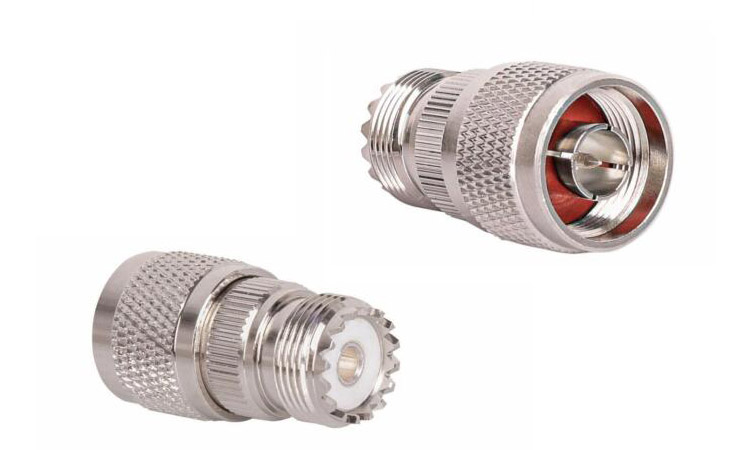
Many people refer to the UHF connector as PL-259 (male) and SO-239 (female). This connector is also a connector type made for military use during World War II. Today people mostly use UHF connectors for amateur radio. Most people also use the 50 Ω version for the RG58 and RG8 and their LMR equivalents. In addition, the UHF connector is available in a small UHF version. This version is designed for devices with limited space, such as cell phones.
SMA/SMB
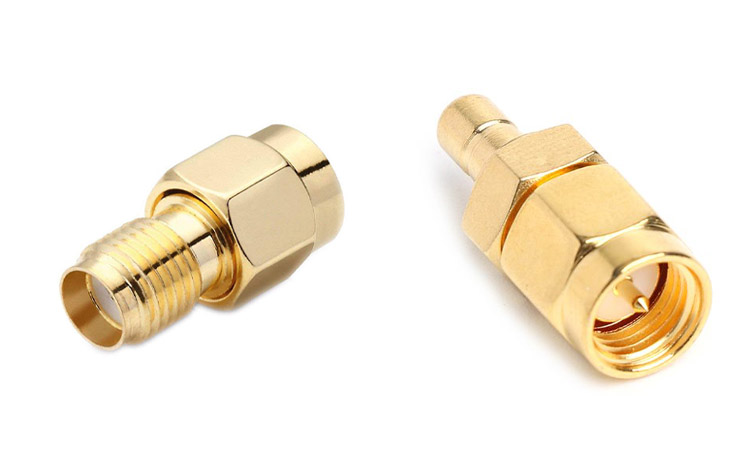
SMA (Subminiature A) is a smaller option than other coaxial cable connectors. This connector is also a miniature threaded connector type.SMA is suitable for RG58 or other thinner coaxial cables. SMA supports use in environments with frequencies up to 24 GHz and offers reverse polarity. SMB (Subminiature B) is a smaller connector version of SMA. SMA connectors are particularly popular in industrial and telecom equipment. The connector is also one of the RF/microwave connector variants. It can provide a fairly simple snap-on coupling design for some semi-rigid cables that are not often connected.
QMA
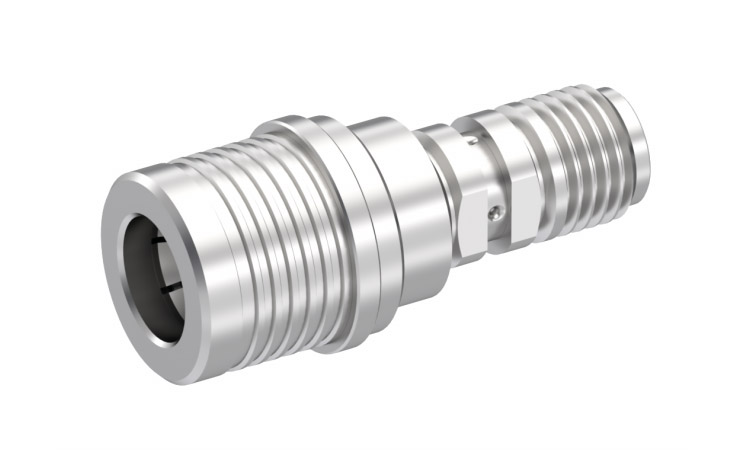
QMA is a coaxial cable connector type that was introduced in 2003. The connector has more features than SMA. QMA has the same internal structure as SMA and is also an SMA quick connect and disconnect variant. SMA connectors offer secure coupling and outstanding RF connection performance. They have been used in industrial and communication applications and some cable routing and assembly. However, QMA is not so popular. As a result, the number of coaxial cables available for this connector is limited.
MCX
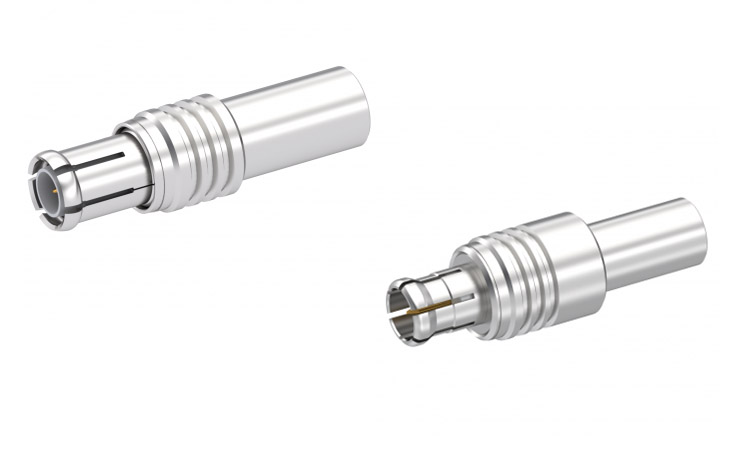
Miniature coaxial connectors are suitable for applications where space, size, or weight is a constraint. MCX was developed primarily for use with Apple Airport Extreme base station antennas. MCX can also be used for GPS location use. MCX connectors are 30% smaller in outside diameter compared to SMB connectors. The connector also supports operation in the frequency range of DC to 6 GHz. MCX connectors can be used for wireless GPS, RF hardware, and digital cellular applications. The connector also offers a snap-on coupling design for easy installation without tools.
MC/MMCX
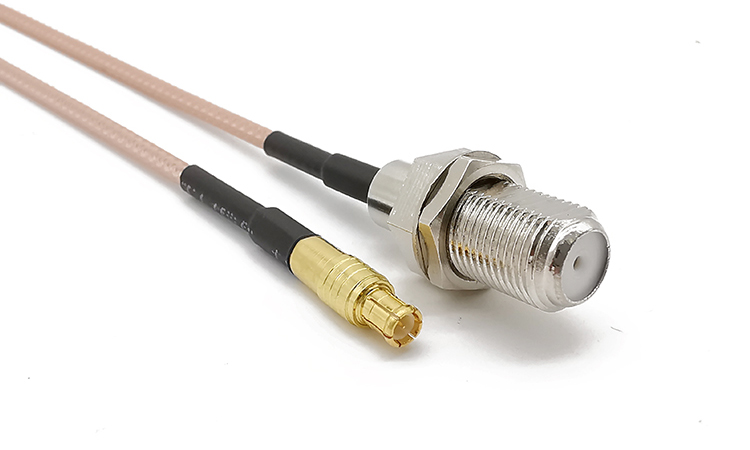
MC and MMCX are the most commonly used small coaxial connector types. Of these coaxial connectors, MC is suitable for automotive applications. MMCX supports GPS and can also be used as a tuner for computers to connect to WiFi.
RCA
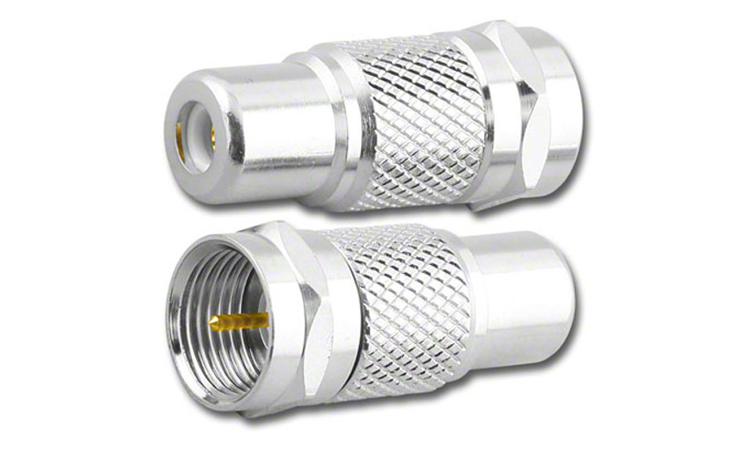
People refer to Radio Corporation of America connectors as cinch connectors. This connector is a coaxial cable connector type designed for audio signal transmission. The connector is also sometimes referred to as an A/V jack. People can use them to plug into the red, white, and yellow jacks on the back of the TV. These cables have a male connector with a ring around them.
FME
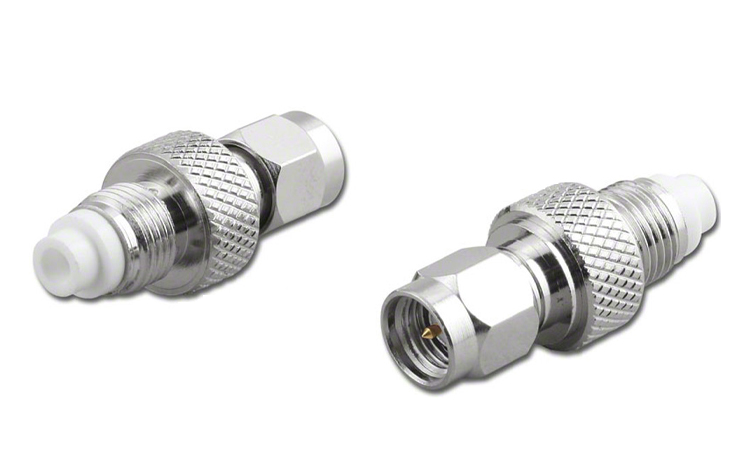
FME is a 50Ω miniature connector type that people can use with RG58. The size of the FME connector is quite small. People can use this connector to pass through holes and conduits that would be too large for a coaxial connector.
PAL
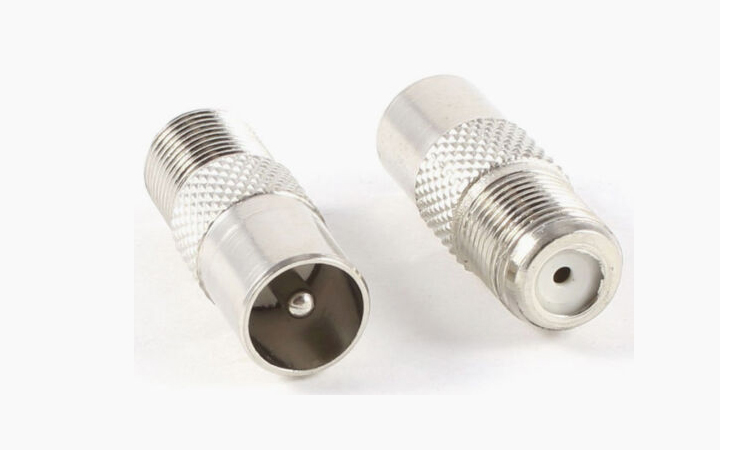
PAL is widely used in Australia, Asia, Africa, Europe, and parts of South America. PAL adapters are rare. In the US, it is only seen in certain circumstances. PAL supports connections for equipment manufactured to international standards.
DIN/mini-DIN
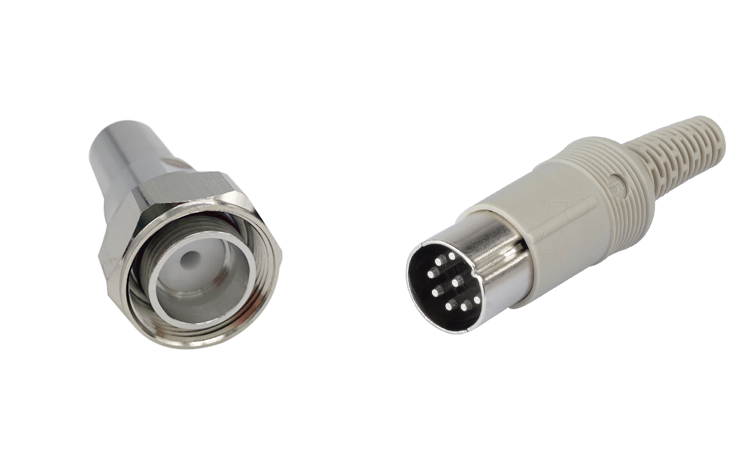
DIN/mini-DIN is suitable for single-wire coaxial cables and is available in several different types. Version 1.0/2.3 was developed in the ’90s specifically for use in telecommunication systems. This connector is available in two different resistance versions. One is the 50Ω version, which operates at frequencies up to 10 GHz. The other is the 75Ω version, which supports operation at frequencies up to 4 GHz. 4.1/9.5 and 4.3/10 have almost the same functionality but are relatively large in size. They support us in thicker types of coaxial cables. 7/16 has a similar form factor to the N series connectors, which are full-size 50Ω DIN. the designers of the connectors are from Germany. They are known worldwide for their support of various high-level power devices. The sensor is widely used in cellular networks, antenna systems, and defense applications.
TS-9
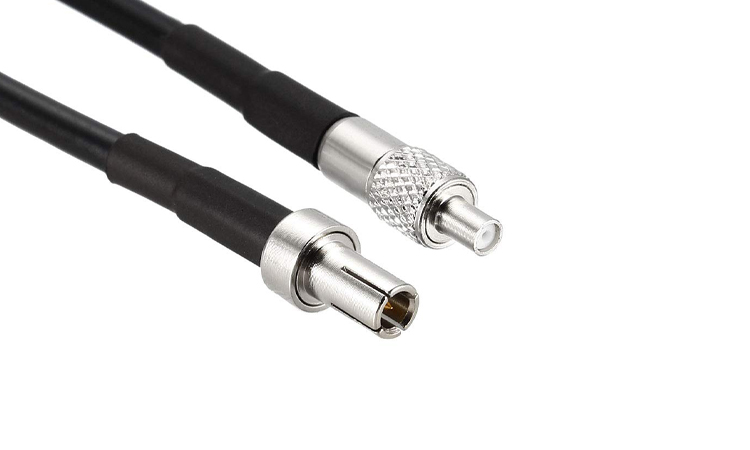
The TS-9 is quite small in size and is coaxial connector types for compact devices. This connector type is typically used with very thin cables. More typical examples are the LMR-100 and LMR-195.
NMO
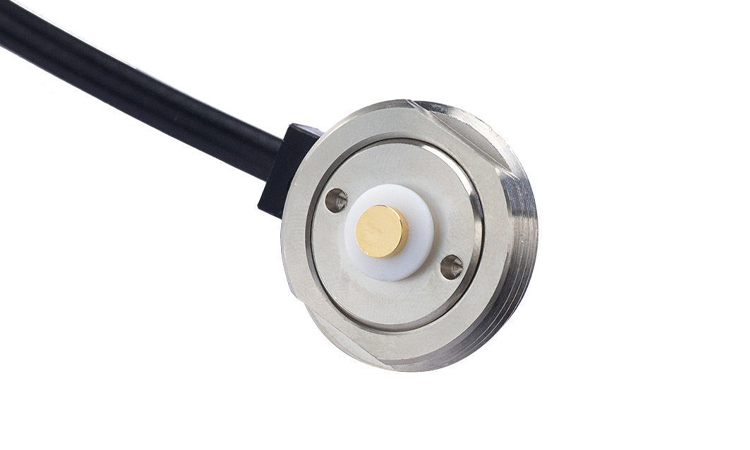
The NMO connector is specially designed for use in Motorola products. The connector is removable and can also double as an antenna mount. Most people will use it with the RG58 and LMR-195 cables.
Gender and Polarity of Coaxial Connectors
Coaxial Connectors Gender: Male or Female
Each connector differs depending on the end. These connectors can be divided into male and female. Generally, plugs are male, while jacks are female. Another obvious difference between them is whether there are threads inside and outside the socket. The internal thread is the male connector, and the external thread of the jack is the female connector. People can connect male connectors with female connectors. Generally, the plug shell is male, and the jack of the cover shell is female. Male-to-male coax connectors don’t connect, which is pretty obvious. The same is true for female-to-female coaxial cable connectors.
Coaxial Connectors Polarity
Polarity connectors are usually available in both standard polarity and reverse polarity. Only connectors with the same polarity will allow male and female connectors to be connected. Reverse polarity usually refers to holes and pins that are interchanged or reversed.
Determining the type of polarity is an easy task. You can easily tell by looking at the plug or jack. Standard polarity connectors are the more common type. A reverse polarity plug and a standard polarity plug have a central hole, while standard polarity has a pin. Reverse polarity jacks come with a center pin, while the standard ones are sockets. There is a clear difference in their appearance. Using reverse connectors prevents the user from connecting the wrong type of connector. For example, these wrong connectors are male to male and female to female. They can damage the connector and can also interfere with the signal.
Key points:
- Standard polarity jacks (female) have a socket, and reverse polarity jacks (female) have a center pin.
- Standard-polarity plugs (male) have a center pin, and reverse-polarity plugs (male) have a socket.
What are the Sizes of Coaxial Cables?
Coaxial cables are mainly used to send video signals. The size of this cable needs to be matched to the connector for the device to work properly. A too-large or too-small connector can result in a connection not being made or coming off the cable. There are many types of coaxial cables, and they are easy to identify. Usually, the cable will carry letters and numbers. In this case, the letters RG stand for “Radio Guide.” The numerical designation attached to the back indicates the type of cable.
UHF connectors commonly used for RF identification use RG-58 and RG-8 cables, while SMA, NMO, and FME use RG-58 or some other finer coaxial cables. People commonly use the following coaxial cable sizes:
- RG-58 (4.95 mm)
- RG-6 (6.15 mm)
- RG-59 (6.15 mm)
- RG-62 (6.15 mm)
- RG-11 (10.30 mm)
- RG-12 (14.10 mm)
Knowing the type, gender, and polarity of coaxial connectors will help you pick the right one. The 15 coaxial connectors selected in this article are the more common coaxial connector types on the market. We hope this information will help you find the right connector and cable size.
About Coaxial Connector Types FAQs
-
What are the different types of coaxial connectors available on the market?
There are several types of coaxial connectors available on the market, including BNC, SMA, N-type, F-type, TNC, and many others.
-
What is the difference between SMA and BNC connectors?
SMA connectors are commonly used for higher-frequency applications, whereas BNC connectors are typically used for lower-frequency applications. SMA connectors are also smaller and have a higher performance rating than BNC connectors.
-
What is the maximum frequency range for N-type connectors?
The maximum frequency range for N-type connectors is typically around 11 GHz to 18 GHz, depending on the specific design and manufacturer.
-
How do you properly terminate a coaxial cable with an F-type connector?
To properly terminate a coaxial cable with an F-type connector, you should strip the cable insulation, fold back the braid, then slide the F-type connector onto the cable until the center conductor makes contact with the connector pin. Finally, crimp or twist the connector onto the cable.
-
What is the purpose of a TNC connector, and when is it commonly used?
A TNC connector is a threaded version of the BNC connector designed for higher frequencies and more secure connections. TNC connectors are commonly used in applications such as radio and wireless communications.
-
How do you select the right connector for a specific application or frequency range?
When selecting a coaxial connector for a specific application or frequency range, you should consider factors such as frequency range, power handling, impedance, size, and connector type compatibility.
-
What is the difference between 50-ohm and 75-ohm coaxial cables, and which connectors are compatible with each type?
50-ohm coaxial cables are typically used for high-frequency applications, such as radio communications and data transmission, whereas 75-ohm coaxial cables are commonly used for video and broadcast applications. Different connectors are compatible with each type, depending on the impedance and frequency range of the cable.
-
How do you test the continuity of a coaxial cable using a multimeter?
To test the continuity of a coaxial cable using a multimeter, set the meter to the continuity or resistance mode, then touch one probe to the center conductor and the other probe to the shield or ground of the connector. A reading of zero ohms indicates that the cable is continuous.
-
How do you troubleshoot a faulty coaxial connector, and what are the common causes of failure?
Common causes of coaxial connector failure include physical damage, corrosion, improper installation, and wear and tear. To troubleshoot a faulty connector, inspect the connector for damage, check the cable for continuity, and test the connector with a known good cable.
-
What is the difference between a male and female coaxial connector, and when should each type be used?
A male coaxial connector has a center pin that protrudes from the connector body, while a female coaxial connector has a receptacle that accepts the center pin. Male connectors are typically used on cables, while female connectors are used on antennas and adapters.







